Money concepts are difficult for young children, but the purpose of these activities are to expose children to money and it’s purpose in fun ways. I do not teach them to count money in Pre-K (except, we sometimes count pennies just like we would count any other manipulative). These activities can also be used to make literature connections with picture books, such as Benny’s Pennies or Bunny Money.
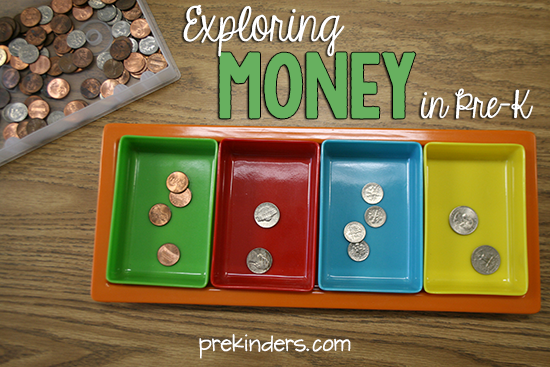
Find more math ideas on the Math Resource Page
These activities integrate math, social studies, art, language arts, and science. I use real coins rather than plastic coins.
Books
Click for a list of Books about Money for Pre-K children.
Music
“Show Me the Money” – Math in Motion, by Jack Hartmann
Piggy Bank – We All Live Together, Vol. 3, by Greg & Steve
I keep one of each kind of coin in clear plastic punch cups for the children to use during these songs. To store them, I just stack the cups and put them away in a cabinet.
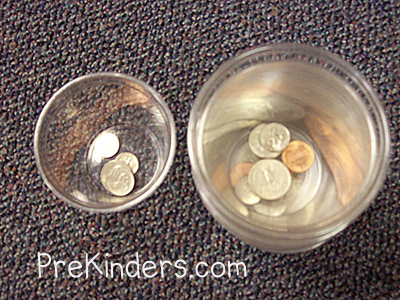
Activities
List
We have a class discussion about the purposes of money (food, toys, clothing, charity, etc.) and make a list on chart paper.
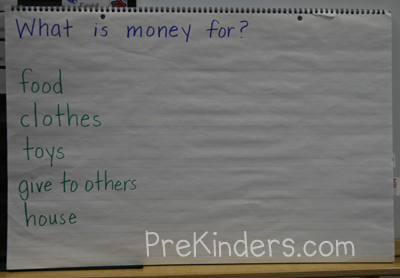
Money Toss
Children toss a cup of pennies onto a mat and count the heads and tails.
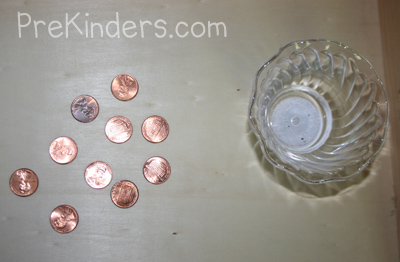
Candy Store
Each child has a small jar filled with “candy” (small craft pom poms). I make money cards by hot-gluing real pennies to poster board pieces (or add coin stickers to index cards). Children pick a card and “purchase” the same amount of gumballs by taking them from the jar. Play until the jar is empty.
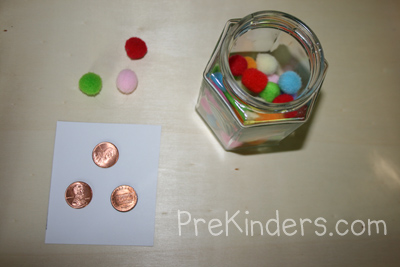
Magnifiers
Children explore coins with magnifying glasses.
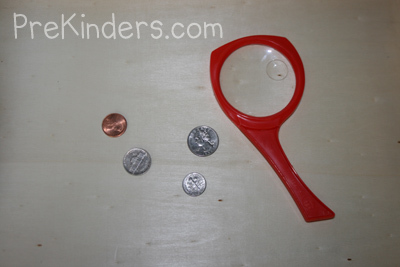
Coin Rubbing
Children lay thin paper on top of coins hot-glued to poster board cards and clip it with clothespins to hold the paper it place. They use the flat side of a crayon to rub over the paper and make an impression of the coins.
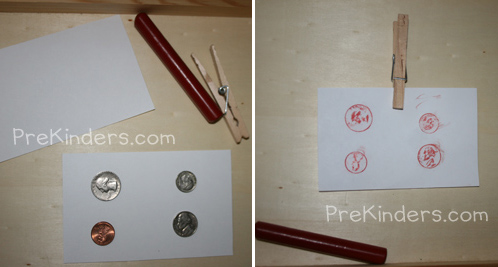
Quarter Stacking
Children roll a die and stack that amount of quarters and continue until the stack falls.
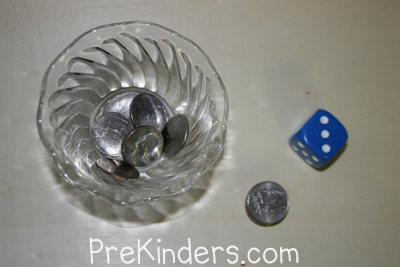
Patterns
Children make patterns with coins. For example, heads, tails, heads, tails; or, penny, nickel, penny, nickel.
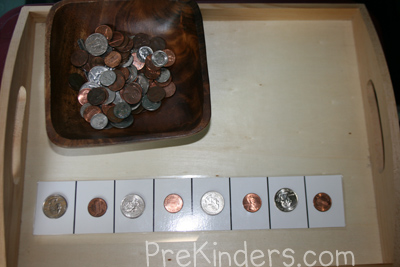
Dominoes
Make dominoes by cutting rectangular pieces of poster board and hot-gluing different coin combinations. Draw a dividing line in the middle. Children play dominoes in the usual way, matching the coins.
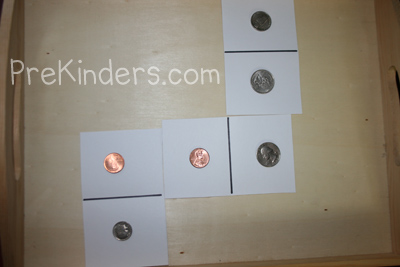
Money Sorting
Sort coins into a sorting tray.
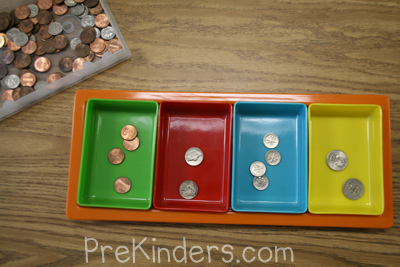
Bead Shop
Place different types of beads into cups with price tags for each cup. Children “buy” the beads by counting out the correct amount of pennies for each bead. Have them string the beads onto a pipe cleaner or lace to make a bracelet.
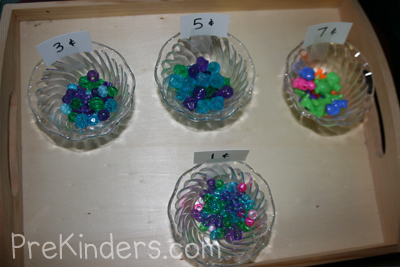
Make Your Own Play Money
Print out the printable below and have children draw to create their own play money. The play money can be used in a dramatic play store.
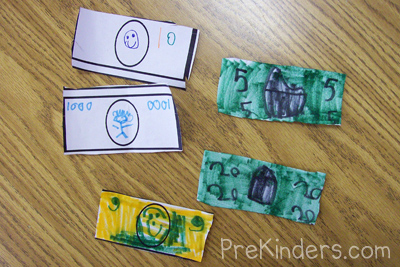
Store
Play food from the housekeeping center is labeled with price tags. Sometimes these are labeled using only penny stickers and sometimes they are labeled with a numeral. Children use purses or wallets with coins inside to play store.
Buried Treasure
Children dig to find coins that are buried in the sand table, and sort them into a sorting tray.
Snack Bar
During snack time, different types of snacks are put in separate boxes, labeled with a price. Children use pennies to “buy” their snack.
Ice Cream Shop
We have large craft pom-poms for the scoops of ice cream, and bowls, spoons, and ice cream scoops. A price list shows how much the ice cream costs. Children use pennies to “buy” ice cream at the shop. Some children are customers and some are employees.
Buy a Letter
Children make a name bracelet with letter beads. Children “buy” the letters to spell their name with pennies. Each bead costs one cent. They count the letters in their name, then count out the amount of pennies they will need. You can also use letter stickers to stick on paper instead of making a bracelet.
Coin Cleaning
Children bring in “dirty” pennies from home and experiment with various ingredients: vinegar, salt, and ketchup, along with some ingredients that will not clean pennies well (such as water, flour, etc.) Children experiment with the different materials to find what cleans pennies the best. (Vinegar and salt together will clean pennies, and ketchup by itself will clean them.)
Real World Experiences
We collect money for charity. Children sort their coins into separate jars (one jar for each type of coin). “Coin County” is a good book for collecting money for a charity. Children place their coins in the slots of the book, and when the book is full, the class will have collected $20. Throughout the year, some of the school clubs sell things like pens, candy, baked goods, etc. This is a good opportunity for the children use money themselves. They choose the item they want and I guide them in counting out the money by telling them how many coins to give. For example, “You need 3 dimes… then 5 pennies”.
Don’t miss the math resource page!
